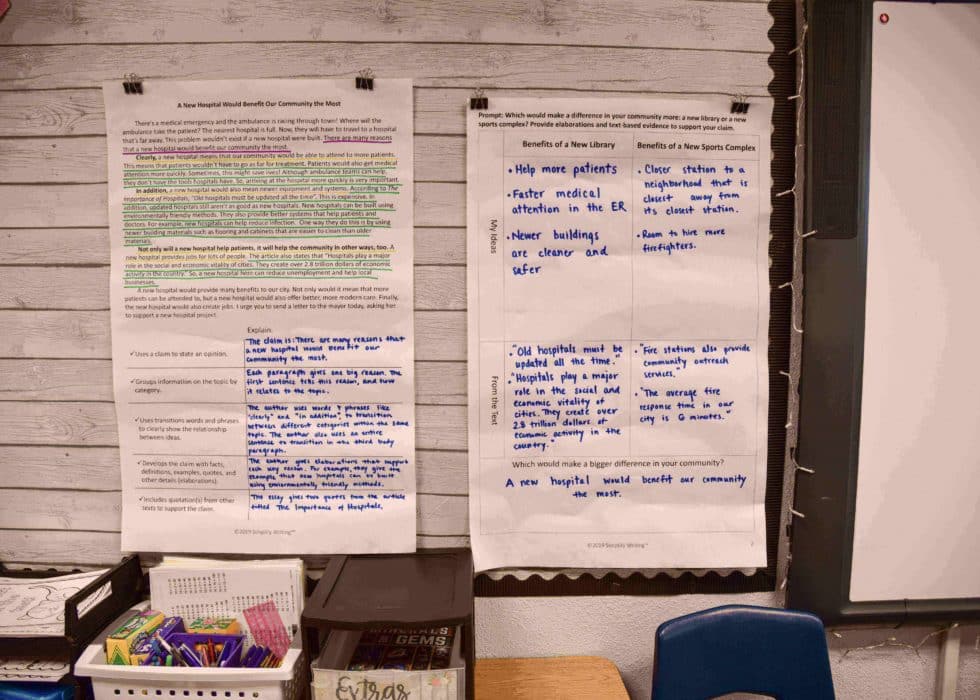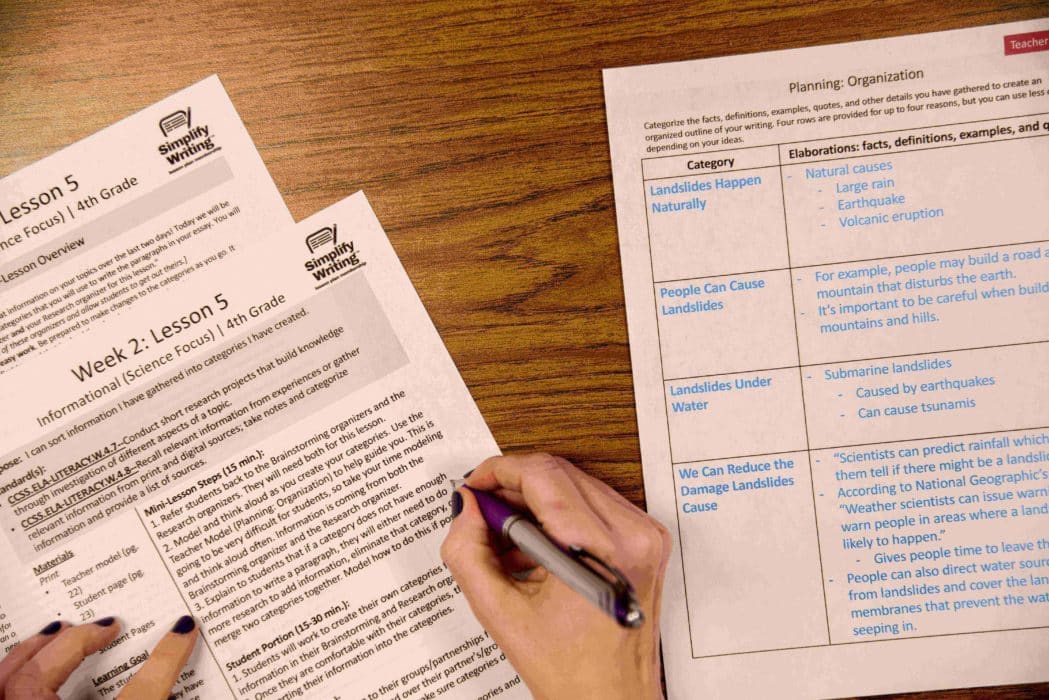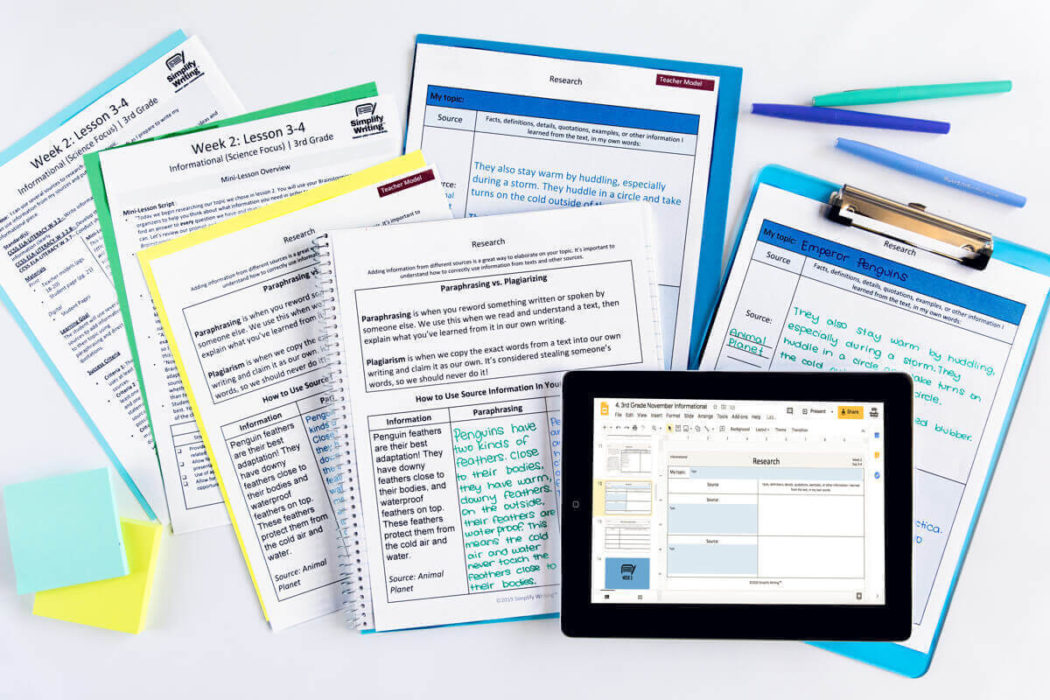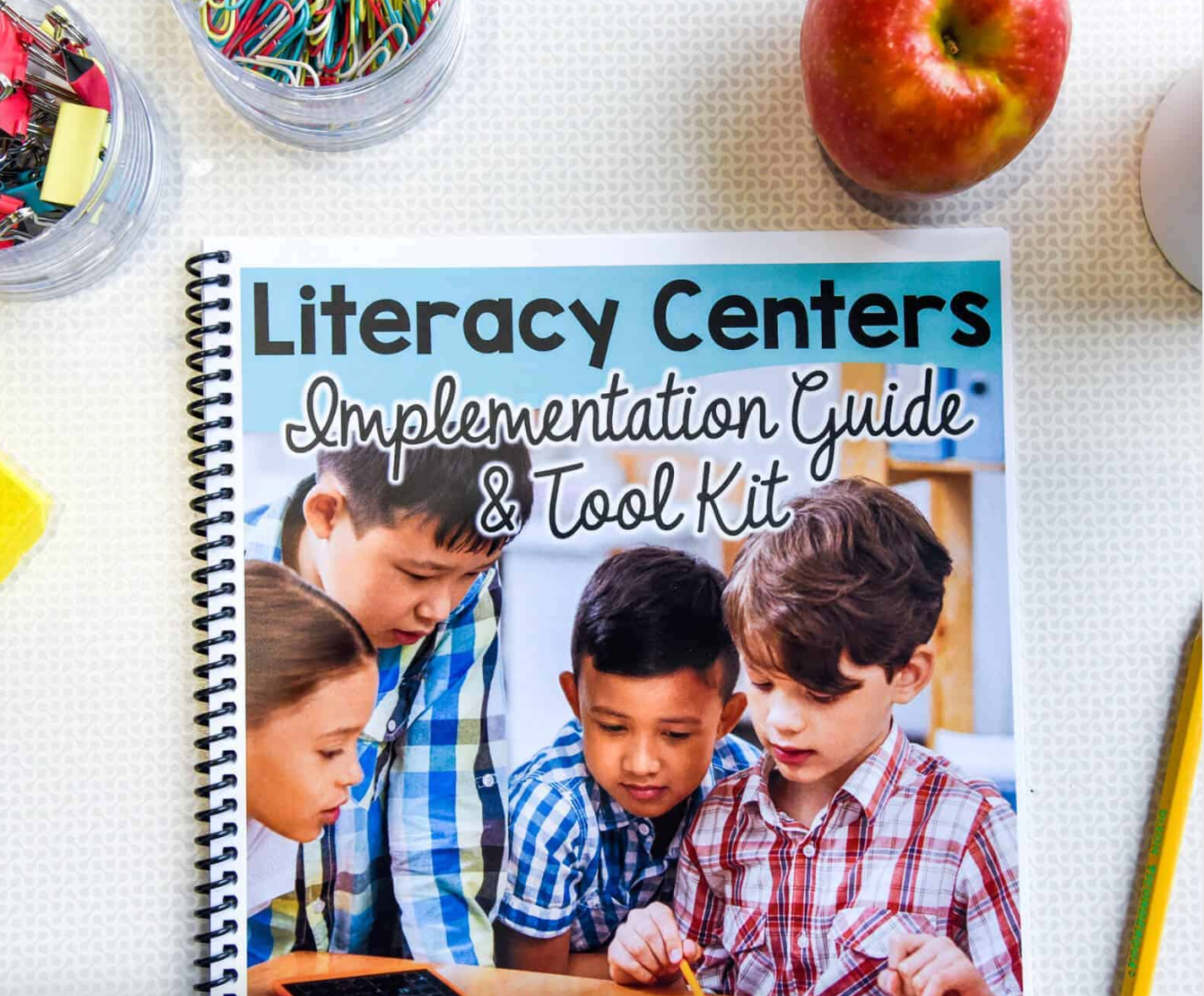These three things will make a huge difference in how you conduct your lessons when teaching writing. They may be a little unpopular, but they make a big difference in the efficiency and efficacy of your writing instruction.
The following tips allow you to streamline your writing instruction and make it more engaging.
1. Don’t include note-taking
We all know note-taking is important and serves a purpose. But when students are already struggling with writing, note-taking sucks up time and disengages students. They end up stressed about getting down everything you’re writing instead of focusing on what you’re teaching.
Note-taking is difficult in all instruction areas, but it’s even more difficult during writing instruction.
I know this isn’t a popular opinion. Still, my special education students, English language learners, and even my on-grade level learners really struggle with taking notes. Honestly, even my gifted students get so stressed about note-taking that they struggle because they want to make sure everything is perfect.
That is why I think it’s good to skip note-taking during writing instruction for all students.
Keep your students engaged
You want to engage all students during the lesson so they participate while you’re writing your model. Doing this allows them to give ideas and respond to your promptings actively. Then, when you’re finished with your model, you can keep it displayed for the students or provide them with a copy so they can refer back to it when working on their own writing.
I like to use anchor charts. They are a great way for students to see the writing easily. Students can also get up during writing time to check them out. I encourage them to bring their notebooks or writing piece to the example, so they can write notes or complete their portion while sitting next to it. Not every student needs to do this, but I encourage the ones to do so that need the example.

2. Don’t teach multiple skills
When teaching a writing mini-lesson, you should teach one bite-size piece of the writing process at a time. For example, you shouldn’t be writing an entire introduction paragraph, particularly in the lower grade levels. Those students are still struggling with paragraph writing, so you won’t be able to cover it all in one step. Even in fifth grade, I like to break the introduction paragraph into different parts.
To keep the mini-lesson “mini” and ensure students retain the information you’re teaching, you need to choose one bite-size piece of the writing process.
This tip can be unpopular because we often try to fit all of the writing instruction for one piece into five days. But that doesn’t really give us time to properly teach everything, do revisions, cover editing, provide feedback, and learn every nuance of the writing type. So, I stretch my writing pieces out to two to three weeks and split things up as small as possible.
I may plan only to spend two weeks on a writing piece. But if we get into it and I notice my students have a lot of holes in what they already know about the writing type, we may halt our lessons so I can reteach a part of it. That might add time to how many days we spend on the lessons.
On the other hand, sometimes I notice that my students are doing better at one part of the writing process because we practice it so much. So then, I can speed through that part and focus on something else or shorten that time.
It’s really important to have that bite-size piece for each lesson and to make sure to modify your classes as needed. So you’re not necessarily doing the exact lessons one after another without considering what your students actually need.

3. Don’t call on individual students
I know this is something many administrators might cringe about, but this works well for me. As much as I love having students give individual feedback, I had too many problems with them raising their hands during the writing lesson and asking questions like, “When is lunch?” So, it just wasn’t working.
Even when students raised their hands to ask a helpful question, a lot of the class would disengage the second I called on a single student. Some students care and want to hear what the other students say, but many students disengage and think about something else.
So, I make sure every engagement piece of my mini-lessons are whole group. So, for example, I might show the students an example of incorrect punctuation and ask them to think about the correct punctuation. Then, I’ll count backward from three and have them say their answers.
At that time, everyone will yell out their answers. Of course, some will say the wrong answer, and then we’ll talk about the correct answer. By doing this, everyone is responsible for responding, which means everyone is engaged.
Sometimes I will have students help me choose a word. I’ll give them three options and, on the count of three, have them tell me which one they want me to choose. Then, I’ll pick what the majority chooses.
It’s really important to plan these interactions in the lessons, so you’ll know what questions you’ll ask when teaching. I like including three or four questions in each lesson to keep students engaged. But sometimes, I’ll go with the flow and stop to have them help me with something.
So, it doesn’t all have to be pre-planned. However, I do like to plan three or four things to ask them during the mini-lesson to keep the engagement going. If I don’t pre-plan my questions, it can be difficult to come up with what to say when I get into the mini-lesson.
If you want to reduce the time you need to spend pre-planning for your mini-lessons, check out the Simplify Writing program.

What if students have questions during the lesson?
If you notice that your students have many questions and want to make sure they get answered, have students write the questions down on sticky notes. Then you can come around and answer those questions during independent writing time.
If writing their questions is too much of a distraction, you can ask them to hold their questions, and a lot of times, they will remember later. But sometimes, they decide not to ask the question because it’s not important enough for them to ask after waiting.
So, I have a system in place, but sometimes just having a pencil in their hand can be too distracting, so you need to tailor it to your class.
And those are the three things that made a huge difference in my writing mini-lessons. If you haven’t watched my writing mini-lesson video, you can watch it here.
It’s really helpful because it breaks down the pieces of a mini-lesson. Then you can use these tips inside that lesson to have effective and efficient instruction for your students.
Tell me what you love or don’t love about your mini-lessons in the comments.


